AN INTRODUCTION TO THE USE OF RAINWATER FOR YOUR HOME AND GARDEN
Where do I start with these words on rainwater use to make you start harvesting rain from your roof? Or, when do you start to use rainwater? For what kind of uses is rainwater suitable? What are the kinds of use, where you don’t want to replace potable tap water, with the water from the sky?
Use or Re-Use?
Why do people say re-use, when they really mean rainwater use?
Imagine your own house. The rainwater falls on your roof. It flows into the gutter, until it finds the downspouts. From there the former precipitation rushes into the drains. Hopefully, those rainwater drains around your house, connect to the storm drains. This is how most of us treat the water, which falls on our roofs. Until now, you didn’t catch it. It just flowed away.
Only the rain which falls directly into your garden is put to direct use. It waters your plants. When you did not harvest any rainwater yet, you simply didn’t use it. Didn’t you?
That means, whenever you may have put a rain barrel under the downspout and caught some water from the sky. Only then you will start to use this source of free water, when you put it in a can to water your plants with.
You didn’t use it before, so why would you say re-use instead of use, when we’re talking about rainwater?
It must have started somewhere, I humbly must say that I don’t know where exactly this ‘re-using’ of rainwater started. I think it might be due to the fact that using rainwater is something which has been propagated from a side which puts ‘re’ to purpose, cycle, claim and other similar words.
And yes, I must add here, we here too use those words. But, that’s for things we already used once before. So, there the ‘re’ at least qualifies to be purposeful.
A Little History on Rainwater Use
On Rainwater Use and a little history
Before potable tap water became available, as it is today, the use of rainwater was commonplace. And not just for the isolated houses and areas. A family, perhaps like yours, was either fed with water through a well, stream, or with water from a rainwater cistern. Or, with all of these sources, when one of them wasn’t reliable enough to feed the family with water, the whole year round.

Do you remember ‘Daisy May Moses’ or Granny from the tv-show the ‘Beverly Hill Billies’? She used rainwater to wash the ‘Clampett’s’ clothes. Whether they still lived in the swamp, or in Beverly Hills. And you know what, she was right, for washing clothes, rainwater is the best source available.
Even into the 20th century rainwater cisterns were a primary source for household use of water. Especially in less dense or remote areas. To make this water from the sky potable, people used rudimentary filters and cooked the water. This to kill bacteria and germs.
The ‘Softness’ in Scale of Rainwater
Rainwater is Lowest in Calcium or Scale, is good for washing clothes
The reason for rainwater to be an excellent source of water for washing your clothes, is that it is lowest in calcium or scale. Unlike groundwater or water from a stream, which both run or sit amongst the earth’s calcium deposits. In the air and clouds there isn’t much calcium for a water droplet to cling to. Hence, when you compare it to other water sources, rainwater is simply the lowest in scale.
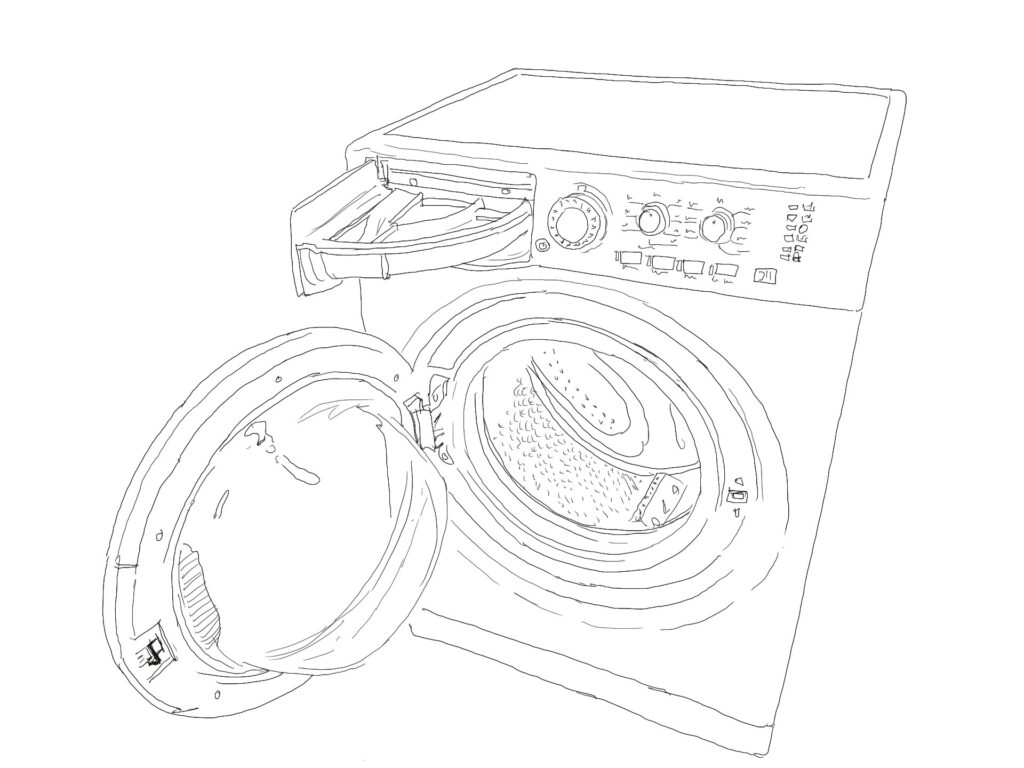
So, when you start washing your clothes with water from a rainwater source, you’ll need much less detergent. On the contrary, water which is high in scale needs its surface tension to be broken down. Therefore this kind of water needs much more detergent. Before this water high in scale can be put to use to wash any of your garments.
Guess what, you also don’t need any fabric softener any longer. There’s nothing better than the ‘softness’ of rainwater to wash your clothes with.
Ever washed your hair with rainwater?
Did you ever have the opportunity to wash your hair with water directly from, let’s say, a rain barrel? Well if you did, you may know how smooth your hair gets from washing it with rainwater. This too is because water from the sky is so low in scale. There are no minerals present which can stick to your hair. On the contrary, when you wash your hair with water which is more rich in minerals. Hence, higher in scale too. Your hair will feel more dry after you rinsed and dried it.
This is the best example, in my humble opinion, to explain why rainwater is useful for washing and rinsing.
When We ‘re Talking about Rainwater, What More Can You Do With It?
The toilet flush
One of the most obvious uses, people like you too may mention, as a possible use for rainwater, is the toilet flush.
And, yes indeed, that’s right. However, it all depends on how much rainwater you can harvest, before you can start thinking about flushing your toilet with it.

For example, an average family of four, like yours, will need to harvest 54000 litres yearly to cover their toilet flushes.
This means the amount of roof surface you would at least be able to catch rainwater from amounts to 75m2 at an average rainfall of 900mm per square m2.
Your cistern should at least contain a volume of 3100 litres, with a 21 day dry period overcome. Or, when you choose to overcome a 30 day dry period, their tank volume should contain a volume of 4400 litres.
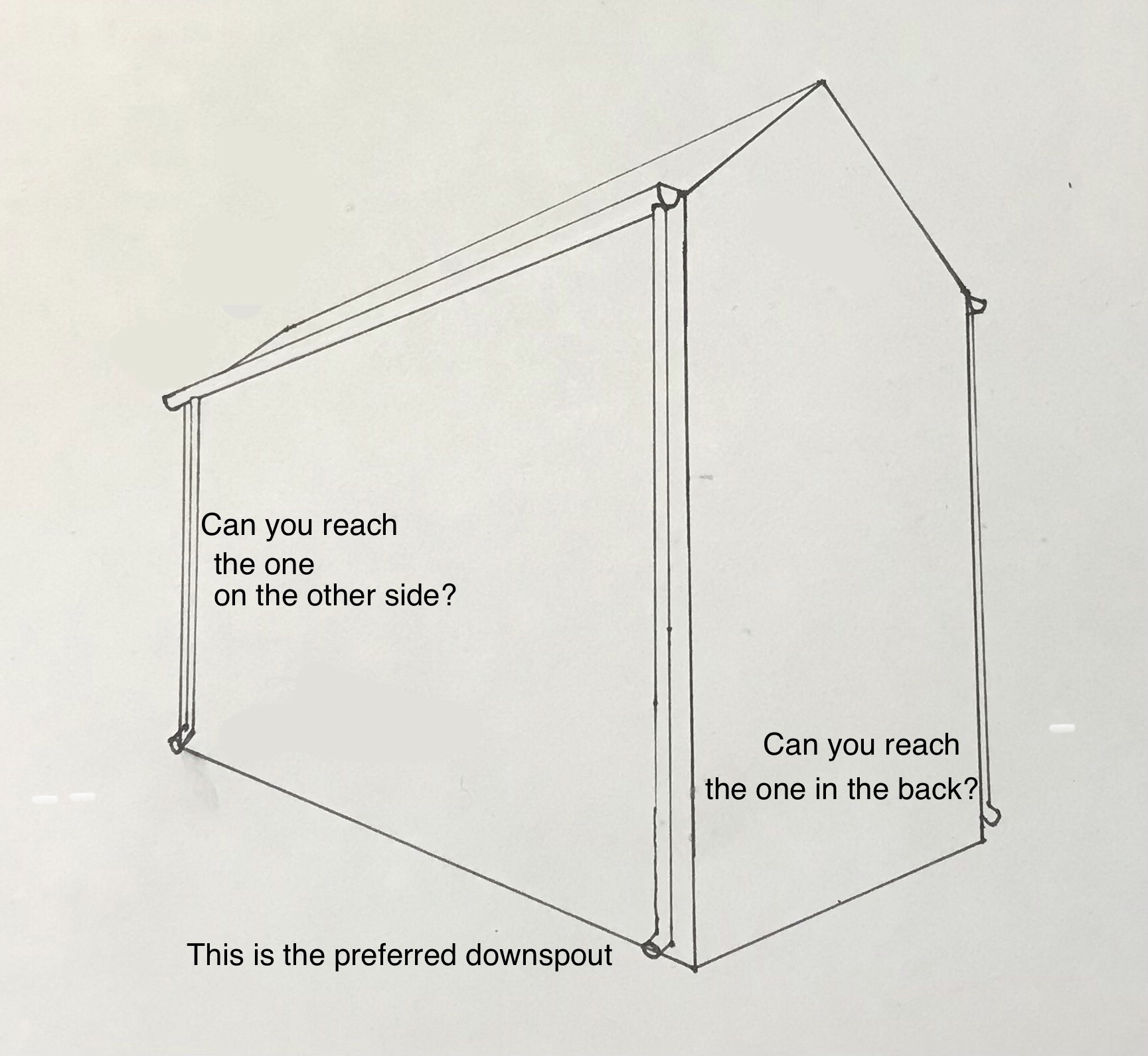
The questions for this example are:
- Is your roof large enough?
- Can you indeed catch such an amount of rainwater from their roof?
- Are you able to place a 3100 litre cistern?
- Let alone, can you place a 4400 litre cistern?
- Is the yearly average stable, or does it fluctuate?
- Do the average dry periods for the location comply with the ones mentioned?
In this example you see a house with three visible downspouts. Let’s say the footprint of the house is 75m2. Question is; can you reach the two periferal downspouts? When you cannot reach the one on the backside, means you cannot harvest half of your total roof surface. When it’s also not feasible to reach the one on the left side, you have to subtract another 25% of the surface, from which you can harvest your rainwater.
Then, there are two other important questions to ask:
If your house is not built yet, can you tweak the design, so a separate rainwater system can be incorporated?
When your house is already built, are you willing to make a significant investment to replace existing water lines, with a separate rainwater system?
Therefore, if one of these above questions cannot be answered positively, your family should forget flushing their toilets with rainwater.
Why? You ask.
Well, simply because the investment for such a system will become too high to become profitable. Otherwise said, the return on your investment will lay way, way beyond your expectation.
Only when your reason for toilet flushing with rainwater is to lower your potable water footprint, you have our blessing.
Do you want to know more about using rainwater for your location, buy and read our book here>>
Want help with a calculation for rainwater use for your home and garden? Contact us
Why is the investment for flushing your toilet with rainwater so large?
- First of all you need a rainwater system which can replenish the separate water system. Especially when a dry period may exceed the amount of time your cistern is calculated for. You don’t want to change out the feeding system to drinking water by hand. Absence of such a replenishing device would mean you could find the reservoir of your toilet empty when you need it.
- Secondly, when the average yearly rainfall for your location would fall below average, the replenishing device will come into action. This will mean your toilet will use potable water for the particular time period the rainfall is low. As a consequence this use of drinking water will lower your expected return of investment.
- Thirdly, to reach all your toilets, you will need a separate feeding line. You can imagine, that this is only truly feasible when your house isn’t built yet. Then you can most easily designate the installation of this separate water line. If your house has already been built, imagine what the cost factor will be, to open up all walls and boxed in mains, necessary to reach your bathrooms. And not to forget, those necessary openings all need to be repaired when the work on the separate rainwater line is installed.
To Use Rainwater on other Appliances, the Cost Factor is Much, Much Lower
When we focus on rainwater use which is more affordable, you can think of using rainwater for washing, cleaning and rinsing and of course you can water your garden with it.
Washing
As we already stated, rainwater is excellently suited for washing your laundry. The advantages of using rainwater for washing are:
- That you don’t necessarily need a replenishing device on your rainwater system
- For the washing machine it will suffice to just put a separate extra tap, next to one you already use. When you would need to switch to potable water, you can easily change out the hose connection from one tap to the other.
- Washing machines are often located in such a way that they can be much more easily reached with a separate water line.
- Also, washing machines are often located in more utilitarian spaces, inside or around the house. The level of finishing in such utilitarian spaces is often lower. Which allows for more practical ways to mount the separate water line.
- Last but not least, because of the low levels in scale of rainwater, the lifespan of your washing machine will increase. Just because it doesn’t contain calcium it won’t be able to settle on the heating element or other metal surfaces inside your washing appliance.

On Rainwater Use for Rinsing and Cleaning
Another suitable use for rainwater as a source, is your rinsing and cleaning.
Let’s take your high pressure cleaner for your garden furniture.
Or, your steam cleaning device to use inside or outside your house.
Both appliances will benefit from rainwater as a source because of its low levels in scale. Either the compressor or the heating element won’t be affected by calcium deposit. Which, in turn, will increase the lifespan of these machines.
Cleansing by hand
When you rinse and cleanse with rainwater by hand, with the infamous bucket, also is a good option. Especially when the things you want to tidy up don’t necessarily need warm water. Always remember that your water heater does use drinking water. As you need to warm up a batch of rainwater you better do it in a cooking device. Don’t use the regular water cooker but designate a special one. Unless you have no problem consuming your cup of tea or coffee from the same appliance, you cooked your rainwater in.
For rinsing and cleaning too, applies that you will need less detergent. Or, you could use less aggressive cleaners to get the same results.

Watering your garden with rainwater
Obviously, the most exemplary usage for rainwater, is to your garden with your harvested rainwater. The same counts for watering your potted plants. Rainwater which you can collect from your roof by tapping in to your downspouts.
The watering can, or the hose
You can either use the infamous watering can, or the hose. Provided for the hose, it requires your cistern or barrel is situated above the surface of your garden beds. When your cistern is situated below the surface, all you will need is a simple submersible pump.
A simple submersible pump
To get the water from the lower level of your cistern to the higher level of your plants, you need a simple submersible pump. Take notice here, because common hoses you may use in your garden, might have some resistance. You can easily solve this with a larger diameter tube.
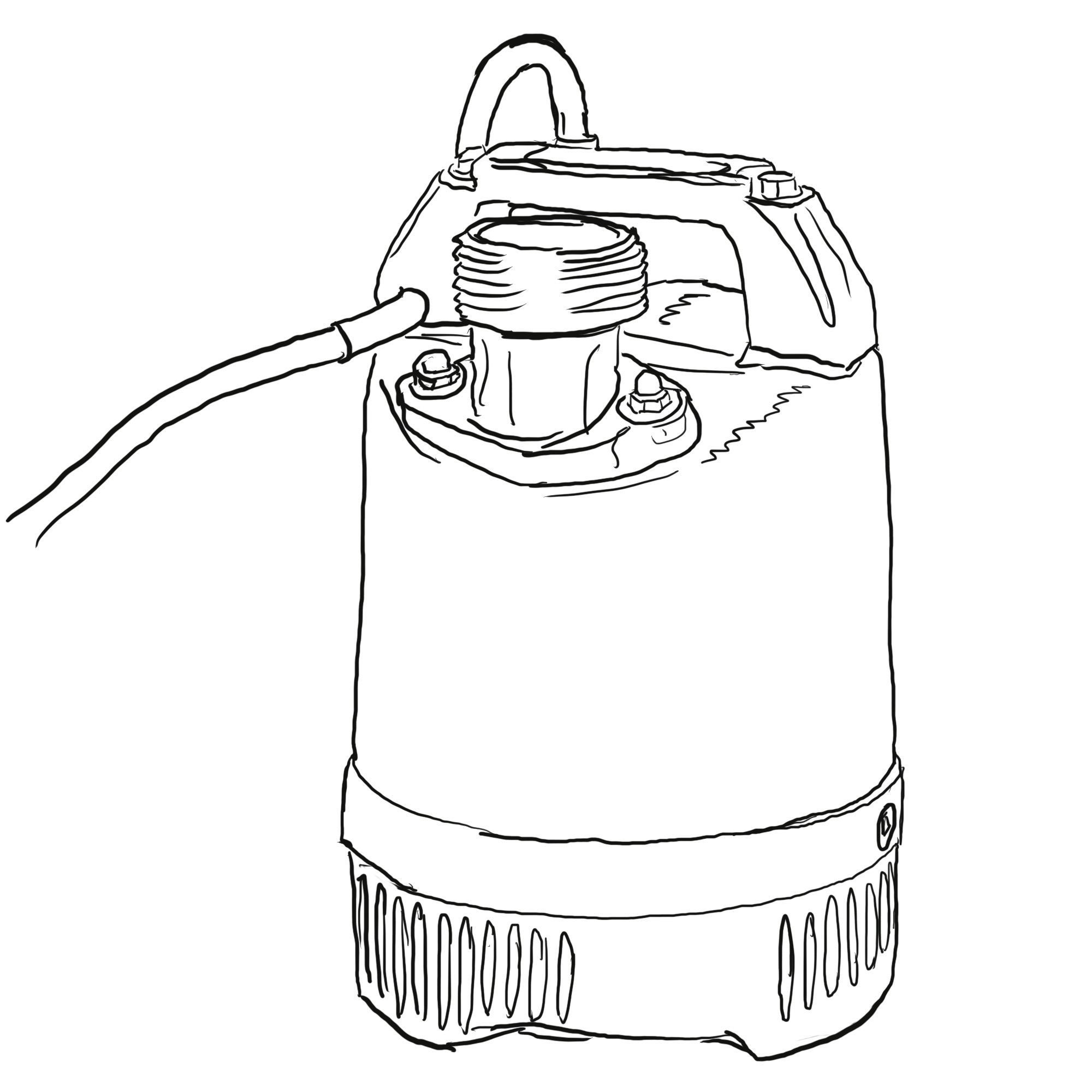
Wick watering system
Another method to water your garden beds with, is the ‘wick method’. For this method you will need to provide watering pipes on the lower end of your raised beds. You will have to install these pipes in such a way, that the water the wicks suck up from your cistern, will flow naturally towards your raised beds.

Watering pipe flowing towards your plants
Therefore, on the side of the cistern these pipes need to be installed a little bit higher than the height to where they enter your soil. On the end of the pipe hanging over the cistern you can install the wick. You can use special wicks, or just a regular, or no longer used dishcloth from your kitchen.
When the wick gets saturated enough, it starts watering your plants
First, your wick will slowly become saturated with the water in the cistern. The capillary space between the fibres will slowly transport the water upwards, until it reaches the threshold of your installed watering pipe. From there, it will be released from the wick you installed and will start to flow naturally towards your plant roots.
Don’t expect immediate results, this system takes time
Do not expect this watering system to deliver immediate results. It takes a while before your wicks will get enough saturation to bring it over the threshold. It also depends on the distance of the pipe to the surface of the water.
So, when your new cistern slowly fills up, the wicks will slowly but steadily suck up the rainwater and bring this water to your plants. When you consider to plant new seedlings or any other kind of greens. Please water their roots like you normally would. Before you start to depend on the water coming from the wicks.
Watering deeper, lets your plants root deeper
By watering on the lower end of your raised beds, you stimulate your plants to root deeper. This will help to improve your soil significantly. By increasing the volume of soil your plant roots can penetrate in search for water, the soil’s capacity to absorb rainfall will also increase. Which, of course will help to prevent puddles in your garden and therefore improves the resilience of your house and plot against excessive rainfall.
Special disclaimer notification
A note is in place here: flash floods like you may have seen on the news over the last decades may still be able to affect you. It all depends on how many people around your house will also start to adapt their garden to the higher anticipated precipitation. Evidently, it depends on how much square surface in your area will be transformed along the guidelines to improve overall resilience of a certain area.


Rainwater as Drinking Water
Is rainwater potable?
People have used rainwater as a source for drinking water
Can you use rainwater to substitute drinking water? When we refer to history, it was common to use rainwater as a source for potable water. Nowadays, we are obliged to say it isn’t suitable without proper filtering. The availability and standards of drinking water have significantly increased over the last century. Apart from exceptions, most drinking water is to be considered safe.
Rainwater is considered to contain low levels of contaminants
Because rainwater falls on our roofs and travels through your downspouts, in which it has direct contact with the surrounding environment, rainwater is considered to be contaminated. The most common contamination is organic in origin. Think of leaves, seeds, twigs, but also debris from animals or even humans which somehow finds a way to our roofs. Dead organic material deteriorates and breaks down in the water. This, because of the possible presence of organic material, bacteria, germs, spores and viruses are also considered present in rainwater. The same is said to be the case for chemicals.
Drinking water companies and their stake
Not to use rainwater as potable water is a standpoint from water companies we are obliged to reflect upon, when we are talking about the use on rainwater for substitution of drinking water. Of course their business is to sell you their potable water. So, indeed, you can say they have a stake in this subject.
Research On Rainwater Use
Research from the German Rainwater Association
However, research from the German association for the use of rainwater and grey water has shown that rainwater consists of a quality which is to be considered similar to surface water. In this research the presence of organic material has shown to be the most prevalent contamination of rainwater, but its levels have been shown to be very low. Germs, spores and viruses have sometimes been found. As is the case for chemicals. Nevertheless, these contaminants all have shown to be present only at very low levels.
On Rainwater Use and Filtration
Old methods and new methods of filtration
In the old days, cooking was used to decontaminate rainwater. Simple methods as a sand filter, or more elaborate filtration systems, which we see nowadays, are used to filter water to make it suitable for potable use.
If you want to read more on the filtration subject here>>
Do we propagate rainwater as a substitute for potable water?
Those older methods still apply to today. However, the way we polluted our environment makes the importance of a good filtration system all the more essential.
therefore the question, do we propagate rainwater as a substitute for potable water?
Some applicable short answers
Well, it is more like so to determine it is possible to use your rainfall harvest as a source for your potable water needs. On the other hand you have to be aware of the limitations and also the regulations concerning the use of rainwater as a source for drinking water.
When you live in an isolated area, the answer is a full on, yes, indeed. When you live in an area served with a municipal water line it’s different. The advantages of the drinking water availability will outweigh the cost factor to produce your own. And for that cost matter, it’s not just a single investment to keep your water potable. Regular maintenance of your filtration system and replacement of your filters is a necessity to produce safe decentralized potable water from rainwater, or from other sources of water.
Rainwater as a source for potable water during shortage
However, if for whatever reason, shortages of potable water would occur, water from your rainwater cistern could be your savior. For instance, coffee brewed from boiled rainwater really tastes good. We reckon that’s also for rainwater’s low level in scale.
Rainwater and What Not to Use it For
What not to use rainwater for
Unfiltered rainwater shouldn’t be used for:
- Personal consumption
- Showering, bathing, brushing your teeth or a quick bodily wash at the washbasin
- The dishwasher
Personal consumption
In the previous chapter we went ahead and explained why rainwater shouldn’t be considered potable for several reasons. Without filtration it simple isn’t suitable for personal consumption. Whenever you need to use rainwater for personal consumption, because there is no other water source available, be sure to decontaminate it or filter it.
Showering, bathing, brushing your teeth or a quick bodily wash at the washbasin
The same counts for your personal washing, whether showering, bathing, brushing your teeth, or a quick wash at the washbasin. Only when filtered or decontaminated, you can use rainwater for your personal washing habits.
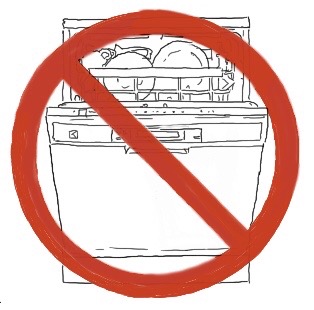
The dishwasher
Then you might say, if you can’t use rainwater for my dishwasher, what about your washing machine? First of all, on your clothes is you will find way less organic material than is present on your plates, pans and cutlery. Secondly, washing machines mostly do not operate with the small nozzles you may know from dishwashers. Lastly, even when you use a biological washing detergent. The soap you use in your washing machines does get rid of unwanted elements, stains in fabric are more persistent than leftovers on ceramic. Contrary to that are the types of detergent you may use in your dishwasher, which are mainly disperser type agents to make the leftovers soluable, so the plates can be rinsed off.
So, what about your washing machine?
Then you might say, if you can’t use rainwater for my dishwasher, what about your washing machine? First of all, on your clothes is you will find way less organic material than is present on your plates, pans and cutlery. Secondly, washing machines mostly do not operate with the small nozzles you may know from dishwashers. Lastly, even when you use a biological washing detergent. The soap you use in your washing machines does get rid of unwanted elements, stains in fabric are more persistent than leftovers on ceramic. Contrary to that are the types of detergent you may use in your dishwasher, which are mainly disperser type agents to make the leftovers soluable, so the plates can be rinsed off.
On Rainwater Use and What to Watch Out For
What to watch for when you install a cistern
What you want to avoid, is to connect downspouts that gather rainwater from one of your roofs which are for example made out of asbestos or bitumen.
Check your roof
Before you start thinking about a cistern, please check your roof. If there’s asbestos present, have it professionally removed and replaced by another type of roofing material. Fibres from asbestos can do a lot of damage inside your lungs, and continue to do so, when you inhale them.
Bitumen roofing
When your roof consists of bitumen, then also consider replacing it with a contemporary material like EPDM or TPE. Bitumen is a fluid material. Which isn’t always visible at first glance. This means frost and heat will have its influence on this material. Particles of the bitumen, consisting of tar or sulphuric compounds may come to loose and can contaminate the water in your cistern.
Ballasted bitumen roofs
Only ballasted bitumen roofs and bitumen protected with a top layer of slate granulate are to be considered safer. When only a small film of water can be present on a bitumen roof, this can extract compounds from the bitumen which will build up as sulphur dioxide, which is highly corrosive. You don’t want to feed that kind of water to your plants, unless you want to get rid of them.
Avoid copper piping for your separate rainwater system
Copper piping is to be avoided as the mains for your separate rainwater system, to feed your chosen appliances. This because of the soft character of rainwater. Your pipes will be affected by the rainwater when you lay them out in copper. The soft rainwater will slowly eat away on the copper molecules of your piping. If you lay out your separate water system, you better choose a pipe system out of polyethylene, polybutylene or even pvc. These types of pipes won’t be affected by the softness of the copper. Plus, they are also known for their relative ease of installment compared to copper.
On Rainwater Use and How You Can Start Harvesting Rainwater
Convinced? Then start digging your Rainwater Catchment
Satisfied with our post on rainwater use? Then consider your next steps towards the build of your very own rainwater receptacle. Or pick up your shovel and start digging in your own garden and install your Underground Rainwater Barrel.
Now it is time to start, order and read our instruction book about how you can create an affordable Underground Rainwater Barrel yourself
- So, let’s get started quickly! View the rainwater tank instruction book >> here
- View the online rainwater tank guide >> here
- Take a look at our rainwater checklist >> here
- Do you have questions about what it involves creating an Underground Rainwater Cistern independently?
Need more help? Check our Rainwater Calculation Service and our Rainwater Zoom Service
Do you need more help with calculating your Underground Rainwater Barrel? Please feel free to contact us. We are always ready to answer any questions you may have. Customer service: You can call us on +3120 7371899 or (+316 – 14 66 74 06) or send an email to rainwater@thewonderhouse.org. We hope to be able to talk to you soon!
View:
The online guide>> here
Our online checklist>> here
or check out our book>> here
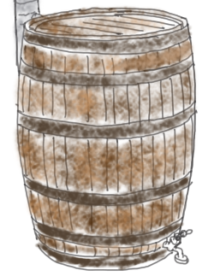
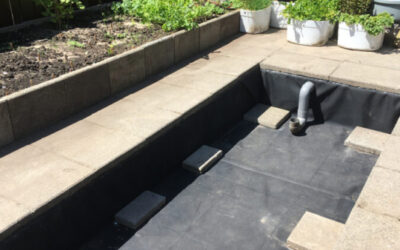
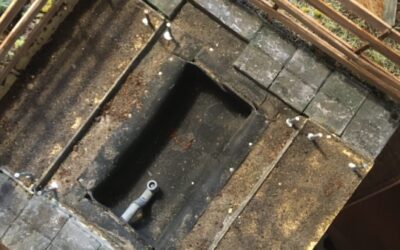
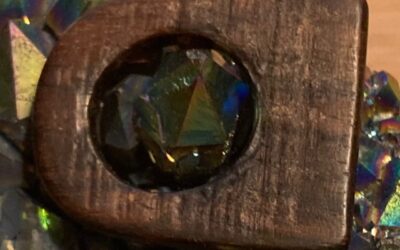
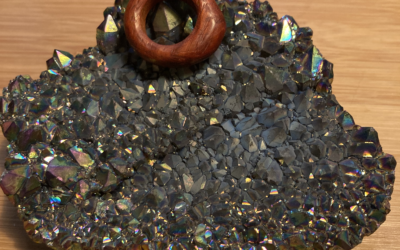
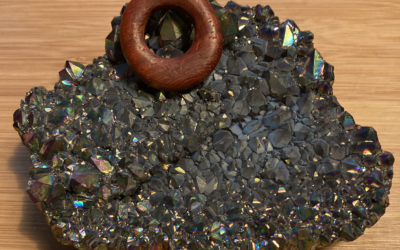

0 Comments